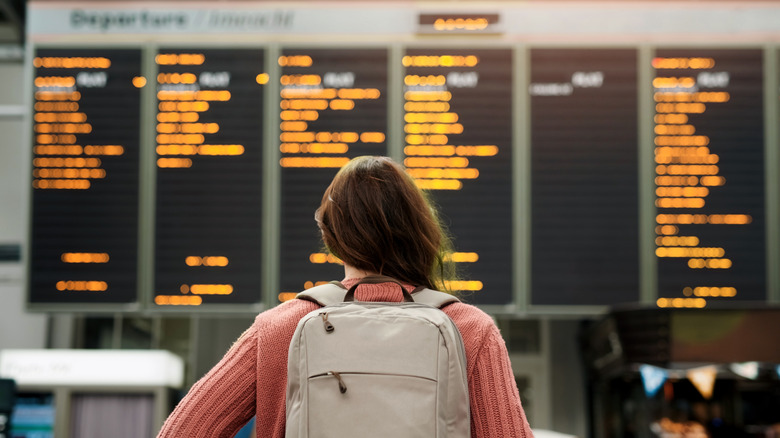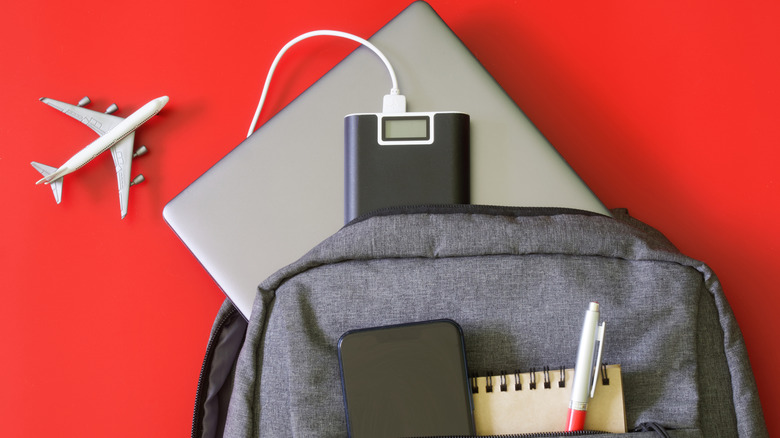Every Type Of Battery The TSA Lets You Bring In Your Carry-On
Packing for a flight can be overwhelming, especially when it comes to what is and isn't allowed in your carry-on bag. Among the items that spark the most confusion are batteries. They are ubiquitous, yet highly regulated, due to their potential safety risks. The Transportation Security Administration (TSA) and the Federal Aviation Administration (FAA) have established specific guidelines to ensure passengers can safely bring their essential devices and spare batteries on board without endangering everyone on the flight.
Batteries are indispensable for modern travel since they power everything — from smartphones and laptops to medical devices and even e-cigarettes. However, their potential of lithium batteries to overheat or cause fires has made them subject to stringent air travel regulations. Understanding the types of batteries permitted in your carry-on luggage and the precautions required is important to enjoy a smooth and safe journey. Below, we break down the TSA and FAA's rules by battery type and provide tips to ensure you comply with the aviation guidelines before taking flight.
Batteries in personal gadgets
Flight authorities allow most battery-powered electronic devices in both carry-on and checked luggage, though carry-on is strongly preferred. Common tech gadgets among travelers like smartphones, tablets, laptops, cameras, and smartwatches — powered by lithium-ion or lithium metal batteries — fall under this category. These batteries must adhere to specific size restrictions: lithium metal batteries cannot exceed 2 grams of lithium content, while lithium-ion batteries must have a watt-hour (Wh) rating of no more than 100 Wh. Devices exceeding these limits, such as high-capacity power tools or specialized equipment, may require airline approval prior to travel.
When packing gadgets, it's essential to ensure that they are completely powered off if placed in checked baggage. This precaution minimizes the risk of accidental activation or damage that could lead to overheating and fire. For carry-on bags, devices should be easily accessible in case TSA agents and airline workers need to inspect them during the security screening process. It's also easier to pull them out whenever you need to check on them or use them for a bit while waiting for boarding.
Spare batteries and power banks
Most tech devices will quickly run out of juice when subjected to heavy use, which is why many people bring spare batteries or power banks. However, these are strictly prohibited in checked luggage, and must be carried in your cabin bag. This rule applies to all types of lithium batteries, which pose a greater risk of fire if mishandled or damaged during transport. Each spare battery must be individually protected to prevent short circuits. This can be done either by keeping them in their original retail packaging, taping over exposed terminals, or placing them in protective pouches.
According to the FAA, passengers are allowed to carry an unlimited number of spare batteries for personal use, provided each battery complies with size limits. Larger lithium-ion batteries (100-160 Wh) and nonspillable wet cell batteries are limited to two per passenger and require prior airline approval. Meanwhile, damaged or recalled batteries are strictly prohibited on the plane unless they have been rendered safe.
E-cigarettes and other specialty items
Battery-powered electronic smoking devices, such as e-cigarettes, personal vaporizers, and electronic nicotine delivery systems, must be carried in your person or in your carry-on bag. TSA regulations prohibit these items in checked luggage due to the fire risks posed by their lithium batteries and heating elements. Measures must be taken to prevent accidental activation of these devices during the flight. Recharging them onboard the aircraft is strictly prohibited.
Fuel cells used for portable electronics (cameras, mobile phones, laptops, and more), along with spare cartridges, are permitted in carry-on baggage under specific conditions. These items must comply with TSA and FAA guidelines, ensuring they are safely stored and meet required certifications. To ensure a seamless travel experience when bringing these to your flight, always check with your airline for any additional requirements or restrictions. Traveling with high-capacity batteries or specialized equipment is riskier than with standard and smaller batteries. By adhering to the guidelines and disclosing all your battery-powered devices to the flight crew, you can avoid delays and ensure the safety of everyone onboard.



